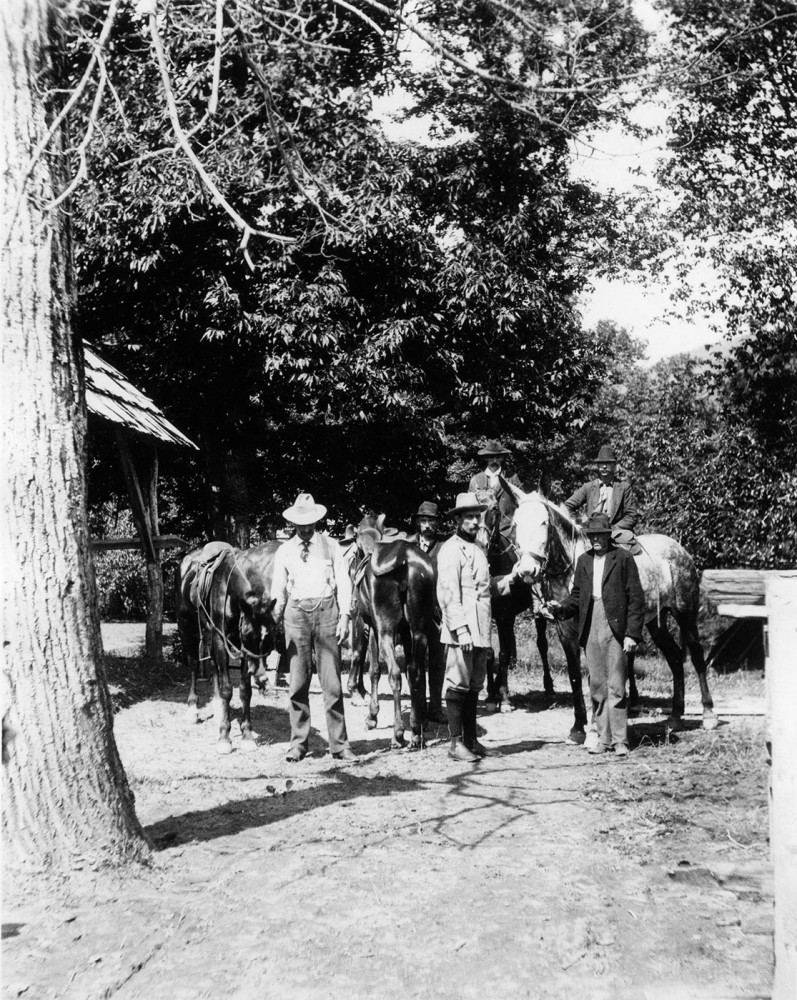
A while back I needed to take down a big dead sugar maple. I wanted to figure out the height and how much wood was in it. It was close enough to the road that I ended up getting an arborist to fell it, but I resolved to make a Biltmore stick – a basic, low-tech tool used to determine the diameter of a tree and its height – to make such calculations easier in the future. There are more accurate methods for measurement, but I liked the idea of the stick for its simplicity, and its connection to my family history.
Carl Schenck, the founder of the first forestry school in the United States [See Northern Woodlands, Spring 2017] and my grandfather’s employer, invented the Biltmore stick. Cyrus Theodore Rankin worked closely with Schenck for many years. In his book The Cradle of Forestry in America: The Biltmore Forest School 1898-1913, Schenck wrote that my grandfather was “the best ranger I ever had.” It was a compliment Schenck repeated in later years in letters to my relatives.
In the 1880s, George Washington Vanderbilt bought 120,000 acres near Asheville, North Carolina, and set about building a grand estate. At its center was Biltmore Castle, a 179,000-square-foot, 250-room, chateau-style mansion that epitomized Gilded Age excess. Vanderbilt hired famed landscape designer Frederick Law Olmsted to design the grounds, and a young Gifford Pinchot, in his first professional forestry role, to manage the forests. Pinchot departed in 1895, continuing on his path to one of the most illustrious careers in forestry. Schenck came from Germany to replace him.
A man of broad vision, boundless curiosity, and tremendous energy, Schenck inaugurated seed-collecting programs, established tree nurseries, set up tree plantations, and built sawmills, log yards, and tanbark-processing facilities.
He wanted to make his mark not just on one estate, but also on the country. In 1898, with Vanderbilt's approval, he founded the Biltmore Forest School. This one-year program combined classroom instruction with extensive hands-on learning. Although short-lived, the school would have a profound influence on the development of American forestry practices and culture through its graduates.
I don’t know when my grandfather came from his home across the mountains in East Tennessee to work at Biltmore, or why. But he apparently arrived before, or early in, Schenck’s tenure. He met my grandmother, Sarah Avvie Ownbey, there. She lived with her grandmother, Jerusha Ownbey, who boarded some of Schenck’s “Biltmore boys.” Cyrus and Avvie were wed on September 26, 1903, at the boarding home in the Pink Beds, named for the mountain laurel and rhododendron that bloom in the spring. He was 34; she was 18. They started married life together in a house on the Biltmore estate. Their first child, my Aunt Lena, was born the next year. They went on to have 10 children, including my father, Thomas, the next to the youngest.
Cyrus T. Rankin worked for Schenck until 1909, when Schenck had a fallingout with Vanderbilt. Schenck left, taking his forest school with him. It operated in various places for a few more years, and closed permanently in 1913. Schenck attributed its failure to competition from the dozens of new university forestry programs.
Schenck went back to Germany in 1914, just in time for World War I, and served as an officer in the German army on the Russian front. After the war, he traveled widely, delivering lectures on forestry topics.
My grandfather died in 1949. In letters to my grandmother and my Aunt Lena in 1950 and 1951, Schenck expressed his sadness for the death of a man he called “the most loyal gentleman whom I have ever met in the U.S.A., be it at Biltmore or elsewhere. Very industrious, unfailing in his attachment, alert to the most difficult tasks and a friend of friends: That was Cyrus T. Rankin.”
Schenck wrote my Aunt Lena of those “halcyon” days in the Appalachian Mountains of North Carolina. In his “mental excursions through the Pisgah Forest and the valley of the Davidson River,” Schenck said, “I never fail to meet your good father...my most loyal friend and helpmate and my comfort in all my difficulties.”
On January 21, 1951, my mom and dad, who were stationed in Germany with the U.S. Army, visited Schenck at his cottage at Lindenfels im Odenwald. My mom, who is 98, remembers this excursion. My parents brought gifts of food from the post commissary that were not available to Schenck in those lean postwar years. Mom remembers him as most gracious. He complimented them on their car, a huge Olds. They had a lunch prepared by Schenck’s housekeeper.
In 1951, Schenck returned to the United States for his last visit. He spent time with former students and was feted on both coasts. He died in 1955 at the age of 87. Today, Schenck’s legacy and that of the Biltmore boys lives on at the 6,500-acre Cradle of Forestry in America Historic Site in the Pisgah National Forest, in the Carl A. Schenck Grove in Prairie Creek Redwoods State Park in California, and in the Carl Alwyn Schenck Memorial Forest in Raleigh, North Carolina. And in forestry textbooks...and in the Biltmore stick.
Crafting a Biltmore Stick
Making a Biltmore stick was not hard. I used the instructions written up by forester Steve Nix on the website ThoughtCo.com and in the Purdue University instructions he referenced. I ripped a piece of oak flooring to size – about 2½ inches wide and a half-inch thick, and 38 inches long – and sanded it. I clamped a metal yardstick along it and marked off the proper measurements for determining diameter. On the other side, which is used to determine the number of 16-foot logs in a standing tree, I marked off 6-inch increments. As an enhancement, I marked one narrow edge in inches. You never know when you might need a ruler in the woods.
The Biltmore stick is designed to be held horizontally against the trunk of a tree at breast height, 25 inches from the eyes. The zero end is lined up with the left edge of the tree. Without moving your head, read the measurement on the right where it appears to meet the edge there and that’s your diameter. Standing 66 feet from the base of the tree and holding the stick vertically with the zero edge at the base of the tree, measure height. Each of the 6-inch measurements equals a 16-foot log.
Nix reminded me to use a permanent marker on it so the measurements wouldn’t get rubbed away in the field. I went him one better: I used a wood burner on the markings and then put polyurethane on it. Signed my name and the date. I was good to go.
Reference: Nix, Steve. “Make Your Own Biltmore Cruiser Stick.” ThoughtCo, February 11, 2020.
Additional Web Content
In “The Biltmore Stick: A Family Story” in the Summer 2020 issue, Joe Rankin recounts his family’s connection to Charles Schenck, the founder of the first forestry school in America and the creator of the Biltmore stick. Here, Rankin shares two letters Schenck wrote to his grandmother and his Aunt Lena in the 1950s:


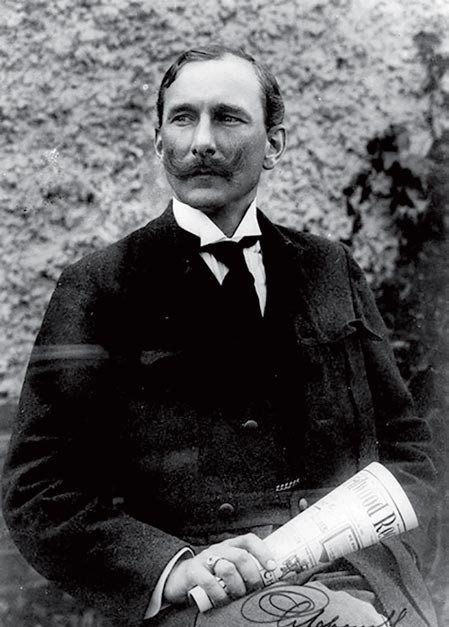
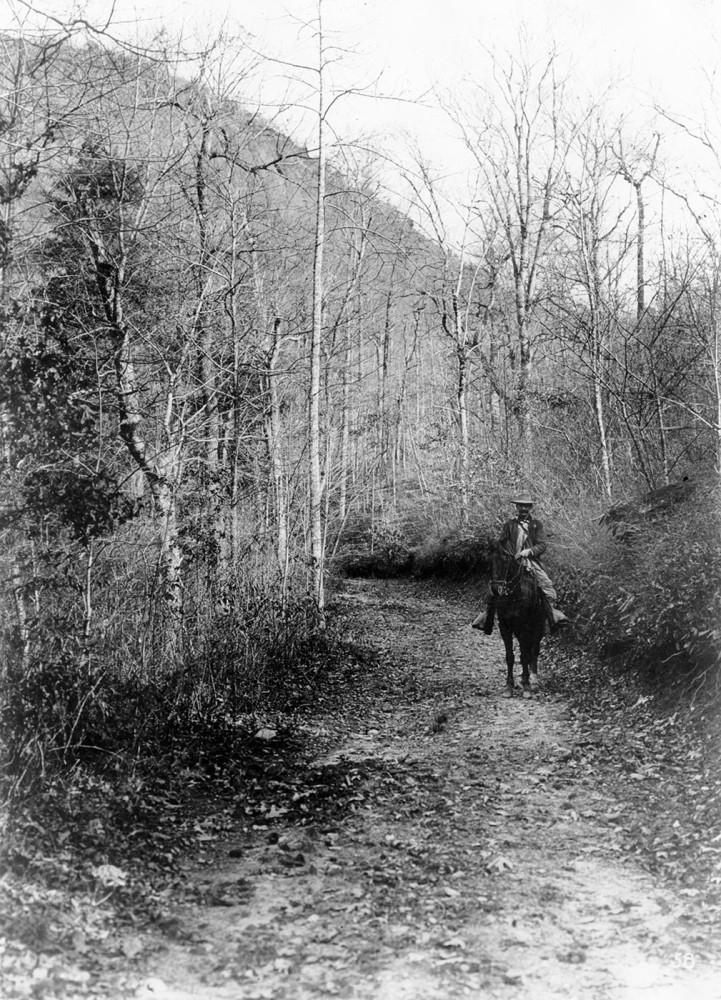
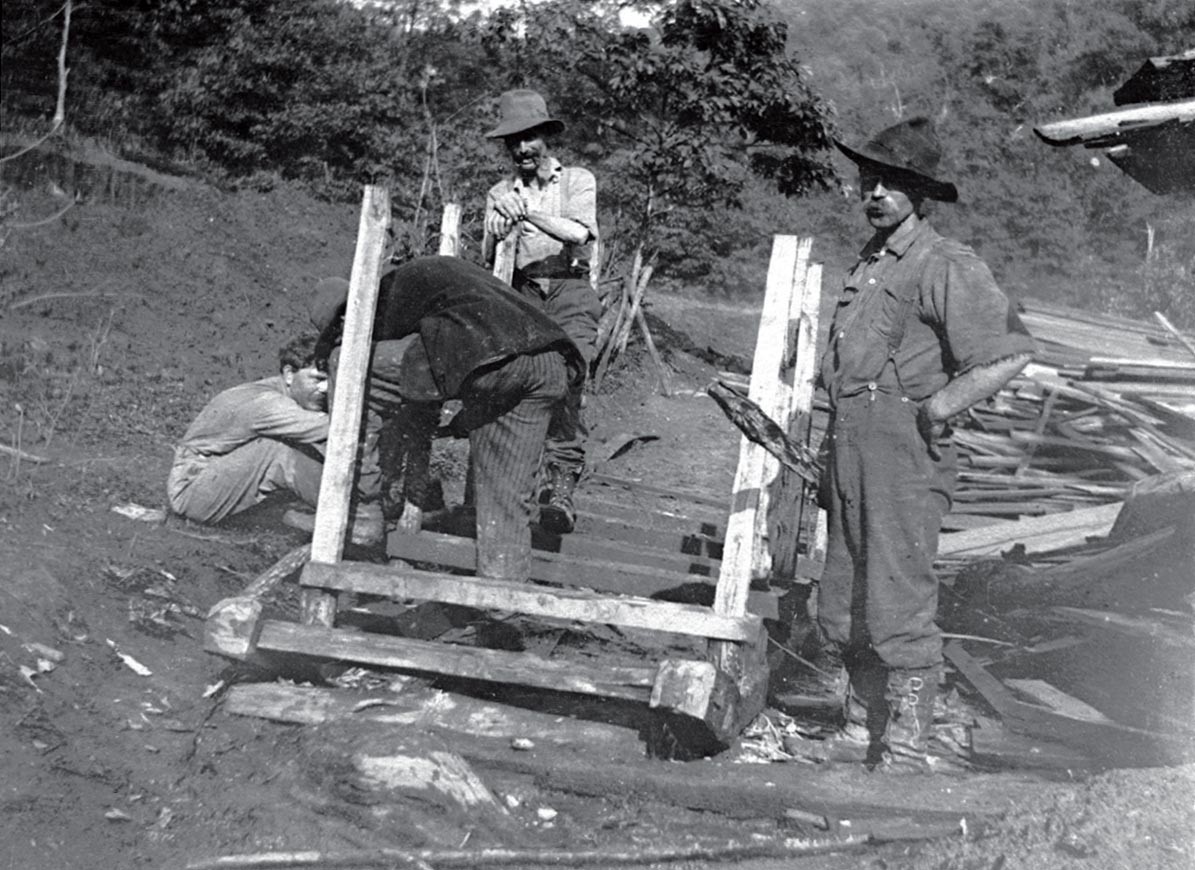
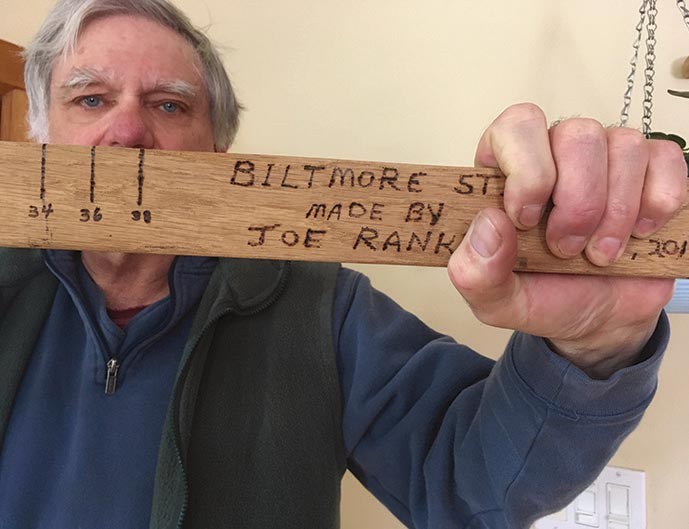
Discussion *